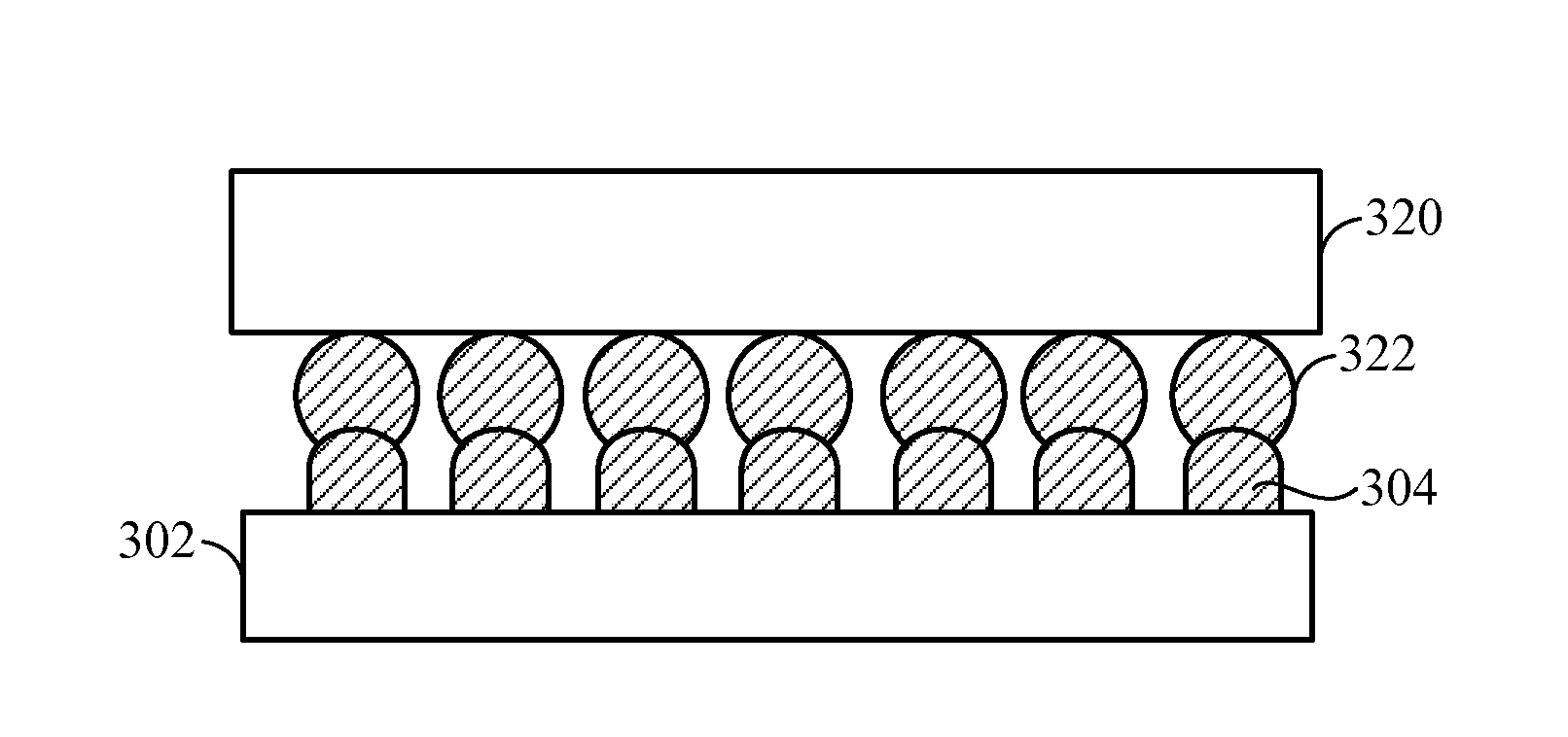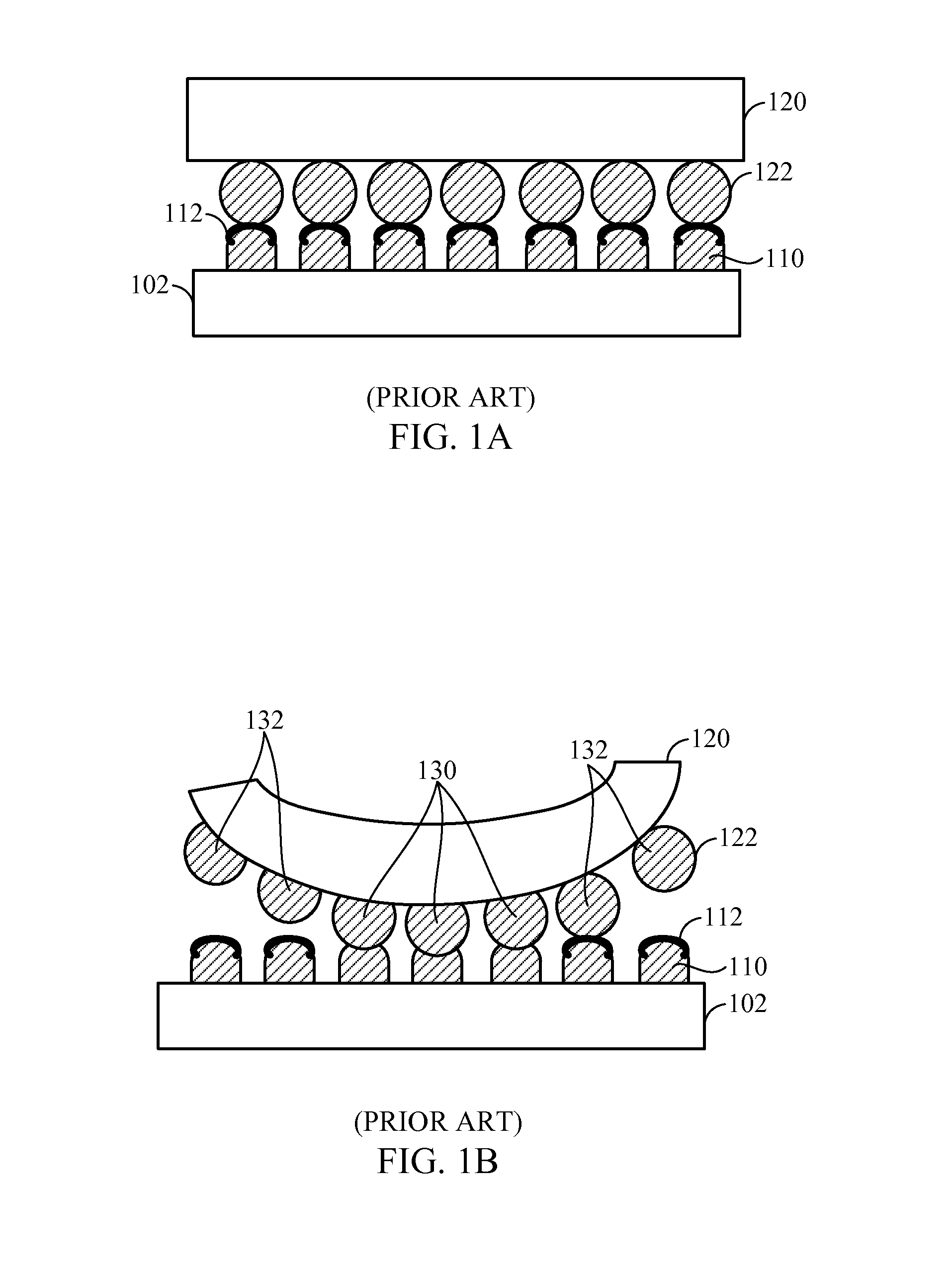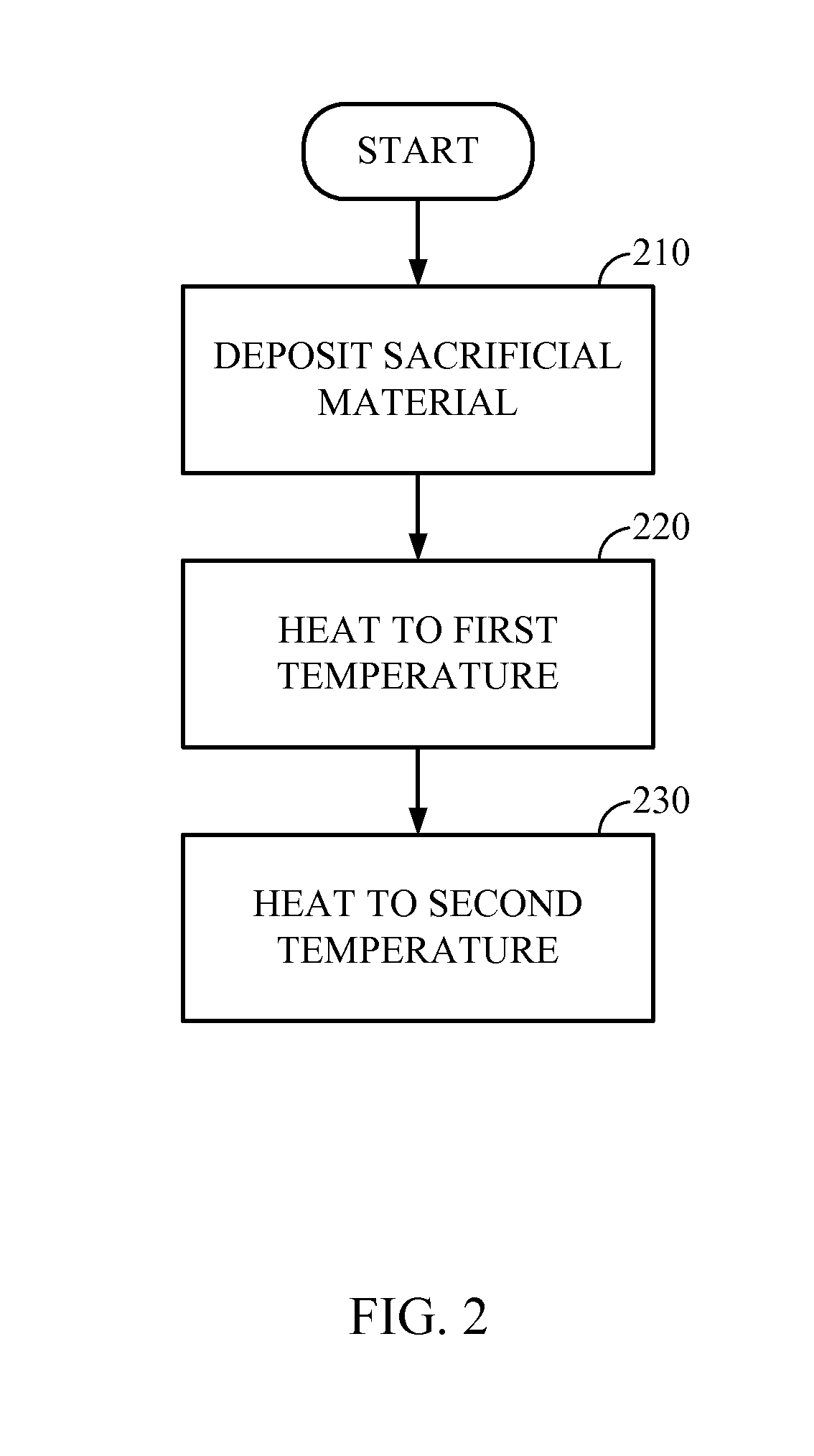Sacrificial Material to Facilitate Thin Die Attach
a technology of sacrificial material and thin die, which is applied in the direction of semiconductor devices, electrical equipment, semiconductor/solid-state device details, etc., can solve the problems of thin die warpage, poor contact between interconnections, and fragile dies that are difficult to handle during manufacturing processes, and achieve the effect of reducing warpag
- Summary
- Abstract
- Description
- Claims
- Application Information
AI Technical Summary
Benefits of technology
Problems solved by technology
Method used
Image
Examples
Embodiment Construction
[0025]Depositing a sacrificial material during packaging of an integrated circuit (IC) with a thin die temporarily increases the thickness of the thin die to provide additional support for the die. For example, during solder reflow high temperatures applied to a die may cause warpage of a die having a thickness below 100 micrometers. A sacrificial material may be deposited on the thin die before stacking on a substrate and before application of high temperatures in order to inhibit warpage of the die during reflow. The sacrificial material may be used in packaging techniques such as face-to-face die bonding or other technologies in which contacts of the die are facing the substrate or printed circuit board.
[0026]FIG. 2 is a flow chart illustrating an exemplary process flow for die attach with thin dies according to one embodiment. An exemplary process for die attach begins at block 210 with depositing sacrificial material. FIG. 3A is a cross-sectional view illustrating an exemplary ...
PUM
| Property | Measurement | Unit |
|---|---|---|
| thicknesses | aaaaa | aaaaa |
| thickness | aaaaa | aaaaa |
| thickness | aaaaa | aaaaa |
Abstract
Description
Claims
Application Information
 Login to View More
Login to View More - R&D
- Intellectual Property
- Life Sciences
- Materials
- Tech Scout
- Unparalleled Data Quality
- Higher Quality Content
- 60% Fewer Hallucinations
Browse by: Latest US Patents, China's latest patents, Technical Efficacy Thesaurus, Application Domain, Technology Topic, Popular Technical Reports.
© 2025 PatSnap. All rights reserved.Legal|Privacy policy|Modern Slavery Act Transparency Statement|Sitemap|About US| Contact US: help@patsnap.com



